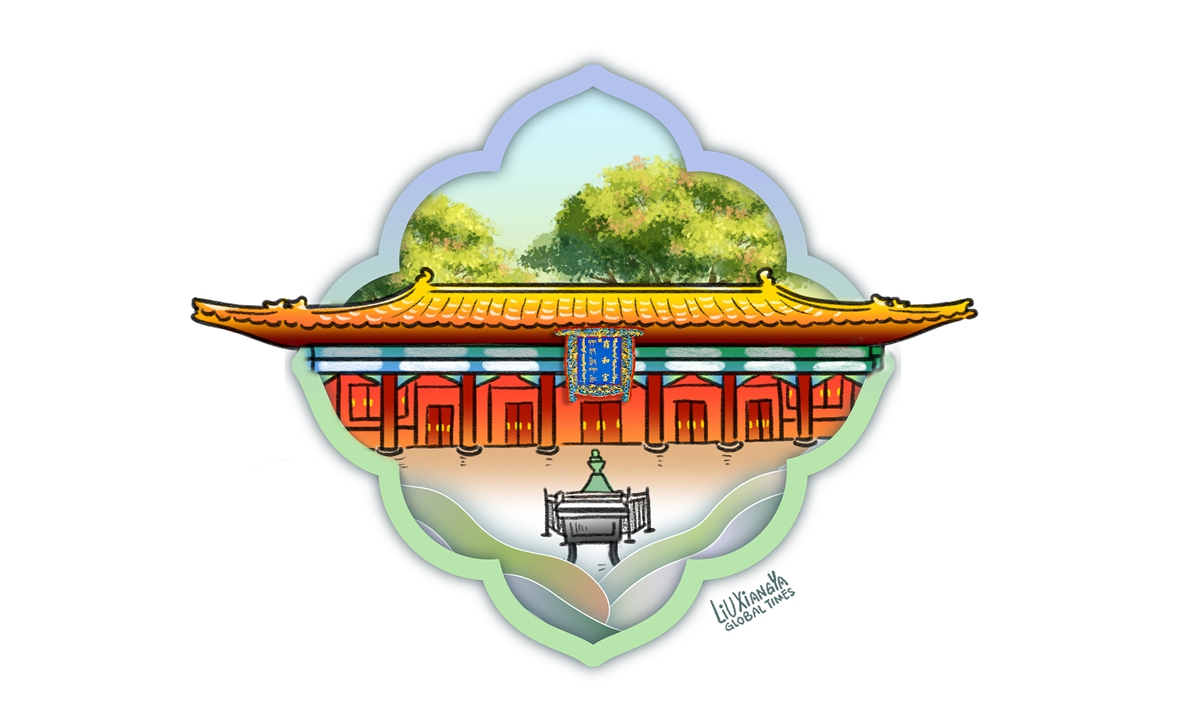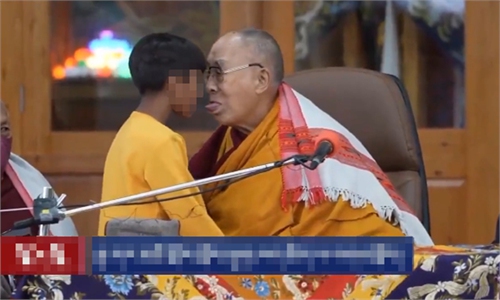ARTS / CULTURE & LEISURE
Yonghe Temple shows openness of Tibetan Buddhism in China

Illustration: Liu Xiangya/Global Times
A few days ago, German Foreign Minister Annalena Baerbock toured the Yonghe Temple, or Lama Temple, in Beijing during her visit to China. This shows China's confidence in the protection of the temple and its openness about Tibetan Buddhism.The Yonghe Temple is an important heritage of China's Buddhist culture, and the largest monastery for Tibetan Buddhism in Beijing. It has been a symbol of unity and harmony between the Han and Tibetan ethnic groups since ancient times.
In 1694, the Emperor Kangxi of Qing Dynasty (1644-1911) built a residence for his son Prince Yong. After Prince Yong succeeded Kangxi to the throne as the Emperor Yongzheng, he converted the residence into an official residence called the Yonghe Palace. During the reign of the next emperor, the Emperor Qianlong, it was converted into a lama temple in 1744.
For hundreds of years, the lamasery has witnessed the continuous governance of Chinese central governments over Tibetan Buddhism. It has performed both religious and political functions and served as a link between the central government and the local government of Xizang. Since the "lot-drawing from the golden urn" ceremony for the reincarnation of living Buddhas outside Xizang, especially in Mongolia was held in the lamasery, it essentially became the center for the central government to handle Tibetan Buddhism affairs.
In 1793, in order to strengthen the governance over the local government of Xizang, the Qing government enacted the Imperially Approved Ordinance for Better Governance of Xizang (the 29-Article Ordinance), clearly stipulating that Xizang's Living Buddhas' reincarnations must be made through the convention of drawing lots from a golden urn.
In 1908, the 13th Dalai Lama visited Beijing to pay homage to the Emperor Guangxu. This was the third religious leader of Tibetan Buddhism to visit the capital after the 5th Dalai Lama paid respect to the Emperor Shunzhi in 1652 and the 6th Panchen Erdeni to the Emperor Qianlong in 1780. During his stay in Beijing, the 13th Dalai Lama donated funds to 23 Tibetan Buddhist monasteries, including the Yonghe Temple and eight other Buddhist monasteries.
During the Republic of China (1912-49), the lamasery played an irreplaceable role in implementing China's religious policies and cooperating with the central government in doing the work of Xizang. Therefore, the lamasery was the first choice for the opening of religious sites in Beijing after China's reform and opening-up in 1978. After two years of renovation and preparation, the Yonghe Temple was officially opened to the public as a religious place in Beijing. In 1983, it was identified by the State Council as a key national Buddhist monastery in China's eastern region.
Since its opening, the monks at the lamasery have been practicing their religion in accordance with the rituals of Tibetan Buddhism. In order to meet the needs of manpower for dharma activities, the lamasery has recruited many more monks.
Since the Qing Dynasty, the Yonghe Temple has been very popular. Men and women, young and old, have come here to burn incense and pray for good fortune. On the first and 15th day of every month of the Chinese lunar calendar, especially big festivals such as the Spring Festival, a large number of tourists and believers go to the lamasery to burn incense and pray for good luck. According to reports, the temple receives 60,000 visitors every day.
The facts show that Chinese people have the full freedom to believe in Tibetan Buddhism. Therefore, the German minister's visit shows that China is confident in its protection and openness concerning the religion.


